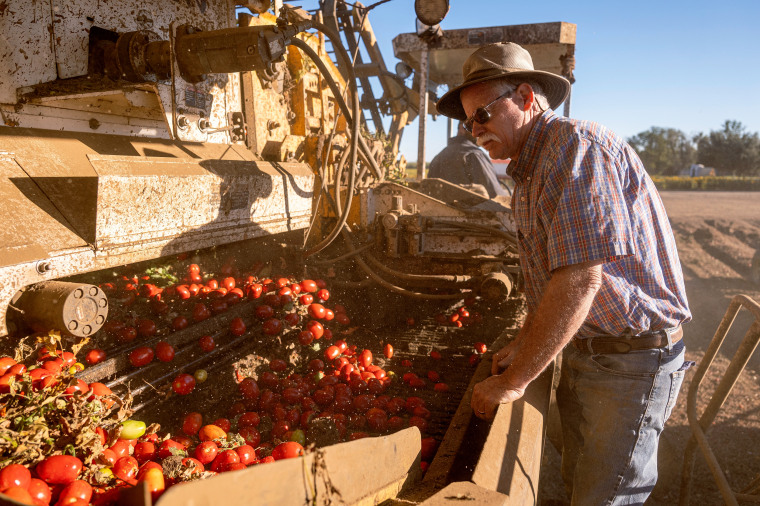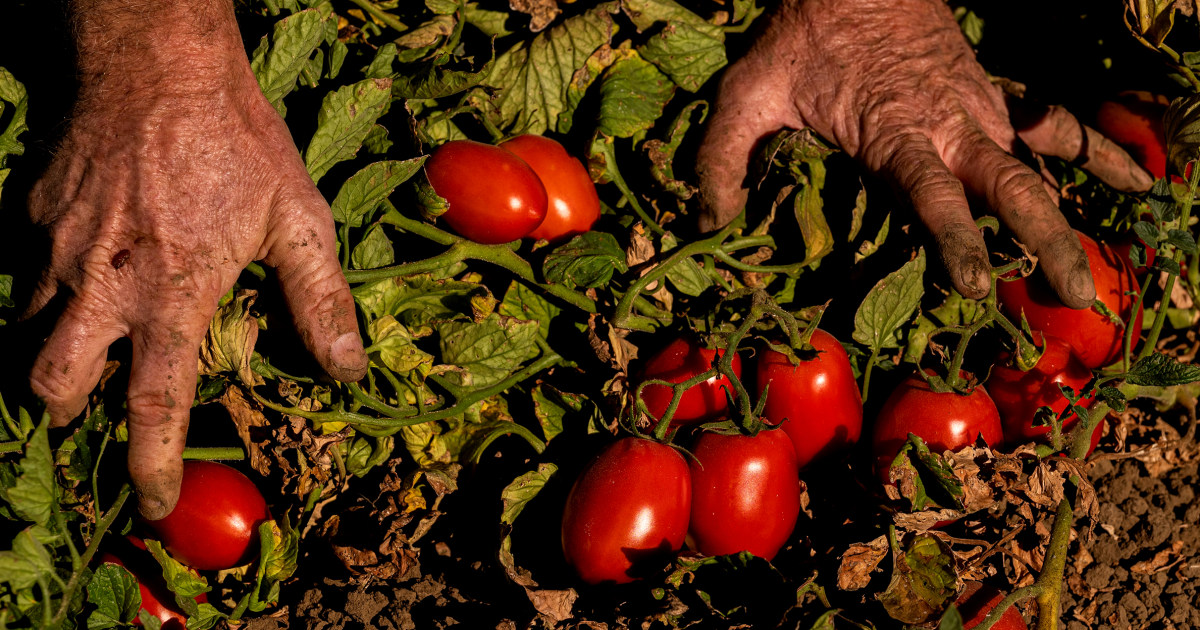California supplies most of the country’s lettuce and spinach. Fresh fruits, such as grapes, peaches, plums and nectarines, are also three weeks behind schedule, Jacobsen said, but shortages are not expected.
As the tomato growing season began, inventory across the country was already tight due to years of drought, poor crops and growers’ focus on other staples, said Mike Montna, president of the Tomato Growers Association of California.
The state’s roughly 200 tomato growers grow 95 percent of the tomatoes used in canned goods in the US, according to the association.
A total of 10.5 million tons of tomatoes were grown in California last year. The crop is harvested about four months after planting, and growers were projected to produce 12.4 million tons this year, but expectations have diminished since the storms hit.
some of the state’s approximately 200 tomato growers, who grow 95% of the tomatoes used in canned goods in the US,
«I think most believe our yields will drop this year, but how much really depends on Mother Nature,» Montna said, estimating as much as 1 million tons of tomatoes could be lost. Others predicted that it could be more.
“There is definitely potential for a shortage,” Montna said.
Bruce Rominger, president of the California Tomato Growers Association, said some tomato staples could be harder to find this summer and at higher prices.
“It would be something where you don’t see as many options on your grocery store shelves,” he said. “There will be some categories, maybe ketchup, salsa or tomato soup, that fall short.”

Jacobsen is more optimistic, saying that despite the late start, tomato products should be readily available.
«It’s a very limited season, but I don’t expect us to get to that point,» he said. “People are doing what they can to catch up. Growers are moving quickly to put more plants in the ground.»
Fresno County tomato grower Bret Ferguson said this week he wasn’t ready to predict a national shortage of tomato products.
“There isn’t an overabundance of inventory, but I think processors and distributors will work around that,” he said. “We have always, as an industry, made things work. You won’t see empty shelves of products.»
Farmers said growing later in the season can make crops vulnerable to extra rain and higher temperatures, causing plants to rot, mildew or die.
Farmers typically sell their tomatoes to processing plants, where they are packaged into items that are sold directly to grocery stores and other retailers.
Sometimes companies buy tomato paste from processors to make their own canned goods for restaurants and stores.
No matter what, the threat of a poor growing season looms over farmers like the dark skies that have hung over their fields for months.
«If you’re a betting guy and you’re betting we’ll have a good, average or better crop,» said Barcellos, the San Joaquin Valley farmer, «that’s a bad bet.»

